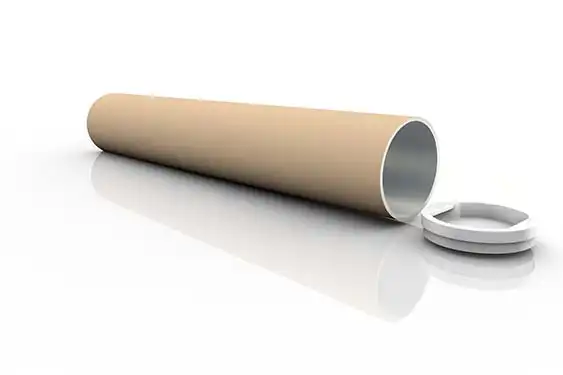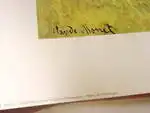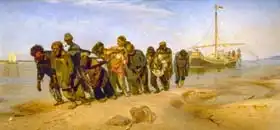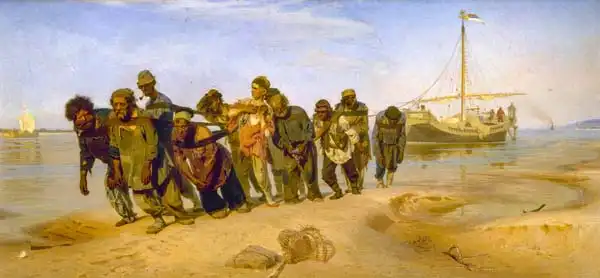About this finishing
Print. The image is printed on the top quality 10-ink HP Z9PS printer on HP matte 270 g / m2 paper. You can choose any size to an accuracy of 1 cm. A margin of 5 cm around the image is added to the size of the motif.


You can find a detailed description about our finishings
here.
Barge Haulers on the Volga
Date:
1873Medium:
oil on canvasLocation:
State Ruskon Museum, Petrohrad, RuskoDimensions:
131 x 281They are the work of a Russian artist who was inspired on one of his trips along the Neva River. For the first time, he saw men pulling cargo ships upstream. The first three men are worth noting. The first, a massive, strong man, resembles a forgotten hero of old Russian epic poems. The second one was painted after a former priest, so it symbolizes wisdom and spiritual wealth. The last of the trio is an old sailor. The expression on the faces of all involved is full of hatred and defiance stemming from their difficult lot. After its completion, the work received awards at world exhibitions and became, albeit wrongly, an ideological depiction of the oppression of serfs by the hated tsarist regime.
Repin painted picture Barge Haulers on the Volga in 1873. Prevailing color of this fine art print is vivid and its shape is long. Original size is 131 x 281. This art piece is located in State Ruskon Museum, Petrohrad, Rusko. This image is printed on demand - you can choose material, size and finishing.
Ilya Yefimovich Repin (1844-1930). Russian
Realistic painter and sculptor. After the October revolution, he was wrongly presented as part of the infamous art movement called Socialist Realism. He graduated from the Academy in St. Petersburg, and lived in Italy and France. After his return to Russia, he worked in Moscow, from 1882 again in St. Petersburg, and from 1900 in the Finnish Kuokkala. He was influenced by
Impressionism, which he encountered while studying in Paris. In the long-term, his style was closest to
Rembrandt and he never became an Impressionist. He painted mostly scenes from the lives of ordinary and poor people, but also depicted former elite and intelligentsia (the Imperial family or Tolstoy). Among his best-known images is
Barge Haulers on the Volga, in which he captured the conditions and the hard work of Russian serfs. He did not want to have anything to do with the revolution of 1917, and he did not paint revolutionary themes at all. He died in 1930 in Finland (he never wanted to go back to Russia). The Finnish city of Kuokkala was renamed Rjepino during the Soviet occupation of Finland.



